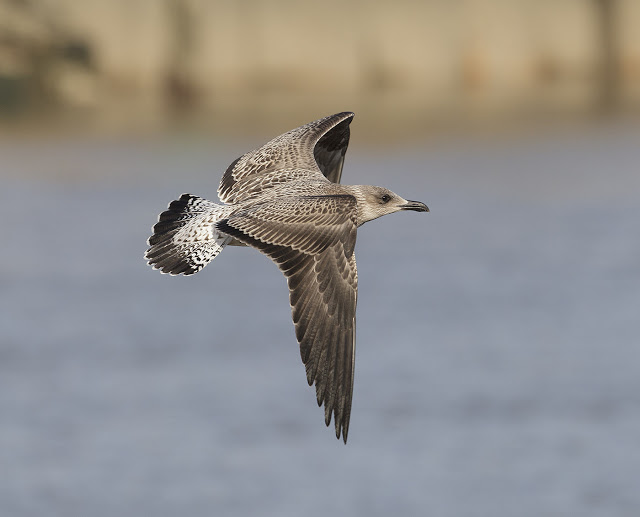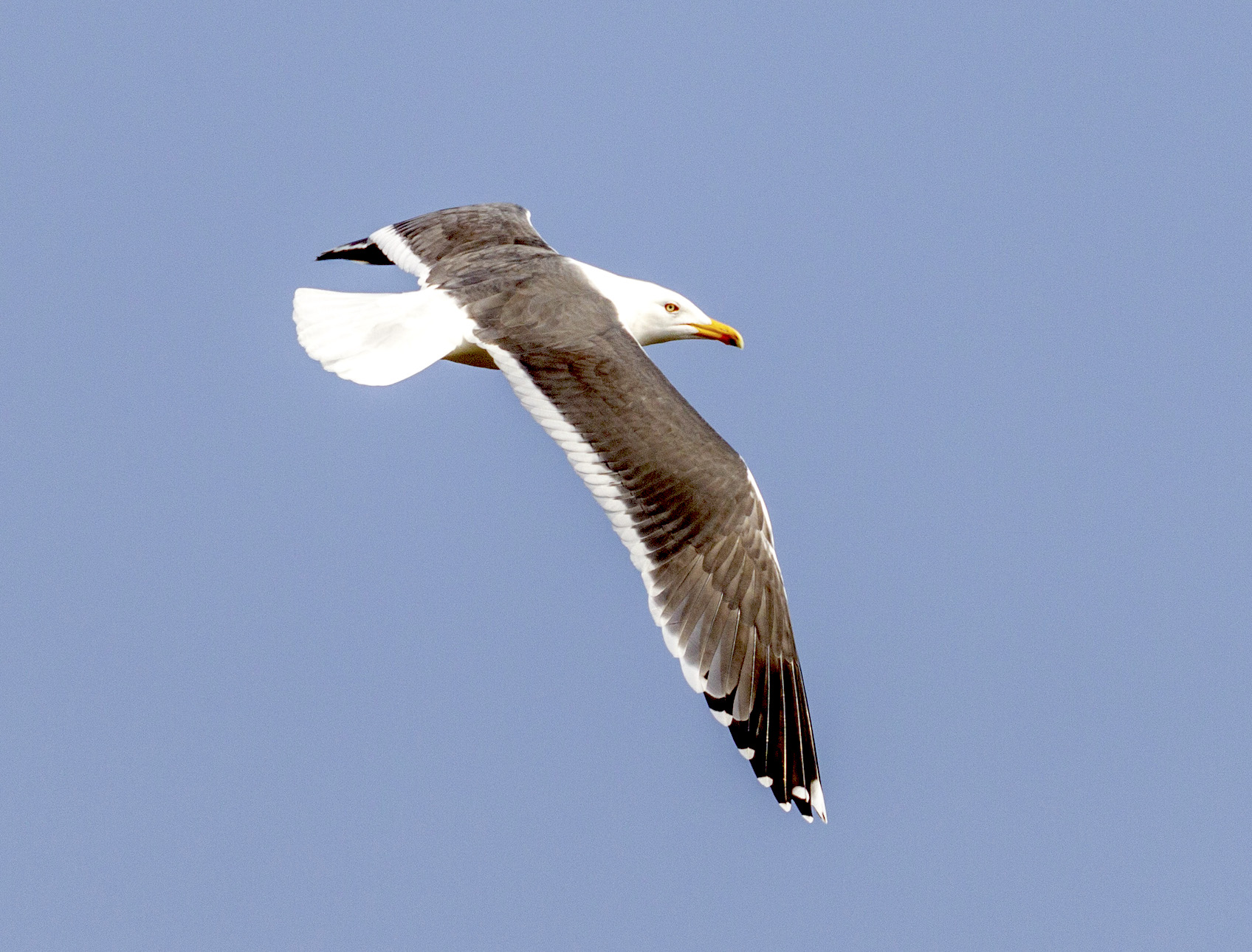Lesser Black-backed Gull Larus fuscus
Present all year: western European form L.f. graellsii common on spring and autumn passage, scarce but increasing in winter and as breeding species. Danish and southern Scandinavian form L.f. intermedius is a fairly common passage migrant. Birds showing characters of the northern Scandinavian form L. f. fuscus (Baltic Gull) have been claimed and one was recently accepted.


Lesser Black- backed Gull is a widespread spring migrant with passage peaking in April-May. Like it's congener the Herring Gull, L. argentatus, it didn't breed in the Atlas period but has shown a similar pattern of spread to that species over the same period in similar nesting sites and often nesting in mixed colonies with it. As a breeder it is still fairly local. There is no accurate estimate of the current breeding population, but it is probably greater than 100 pairs currently. The wintering population at the top 10 sites for this species during December-January from recent LBR data is around 100 birds and the true wintering total is likely to be higher but not massively so.
Baltic Gull, Larus f. fuscus
In most years’ birds belonging to the northern race L.l. fuscus, so-called Baltic Gull, are seen, but BBRC acceptance criteria are very strict and there are only a handful of accepted British records to date. After a review of all UK submissions of this subspecies, BBRC published the first acceptable record for Lincolnshire in 2025 which was a 2CY bird found at North Hykeham, July 24th-31st 2013. A second record accepted by BBRC in an earlier review was published in their report of Rare Birds in Great Britain, 2019 (British Birds 113: 607). This was a 2016 record of an adult at least six years old which had been colour-ringed at a colony in Norway in 2010 (Black/white J2LL). It was seen by two astute ‘gullers’ at Norton Disney quarry July 22nd 2016. Recent updated information from the BBRC advise that claims of unringed second calendar year birds based on detailed notes (including moult analysis) and good photographs result in more accepted records. The criteria for safely identifying 2CY/first-summer Baltic Gulls in a Western European context in April-June and potentially into August are:
- At least eight first-generation (juvenile) primaries replaced with second-generation, or in late summer, third-generation feathers. If P9-10 are retained first-generation feathers, this will be from arrested moult.
- Full set of second-generation secondaries.
- Full set of second-generation rectrices (tail feathers).
- Dark black-brown third-generation scapulars and coverts in the mantle.
- Lack of strong barring in the coverts and tertials, with most feathers being plain brown.
- Pale-based bill with black markings at tip.
- Elongated structure.
- Whitish head and underparts.
References
(Account as per new Birds of Lincolnshire (2021), included September 2022; revised June 2025)
